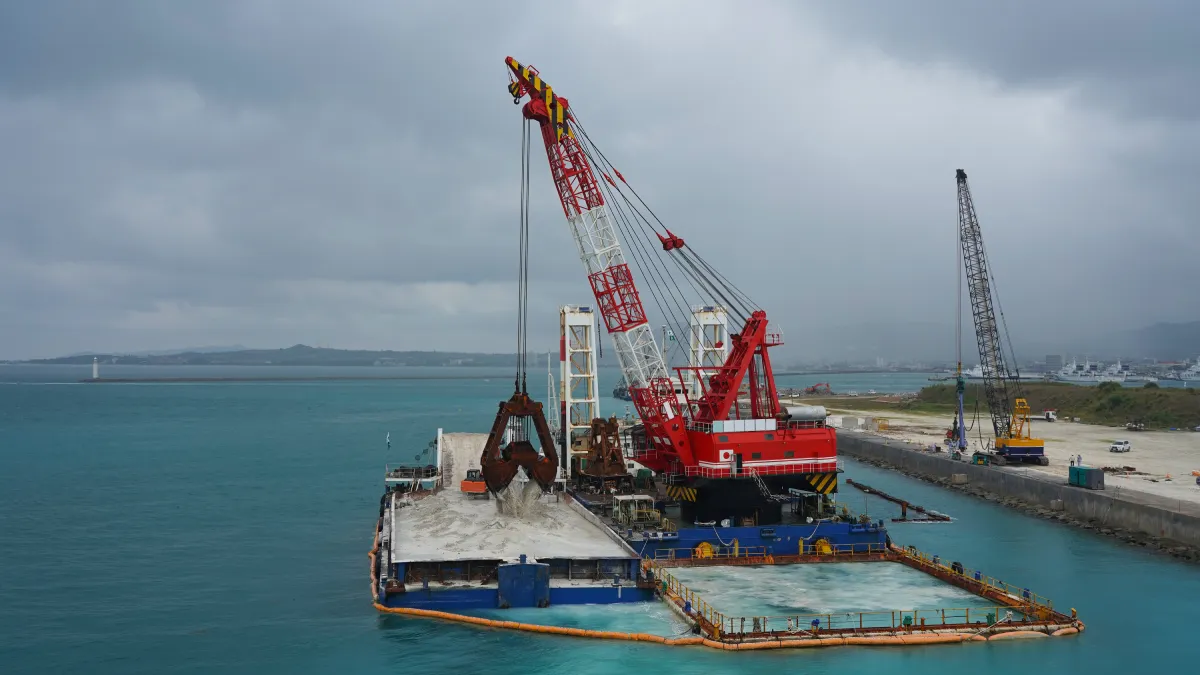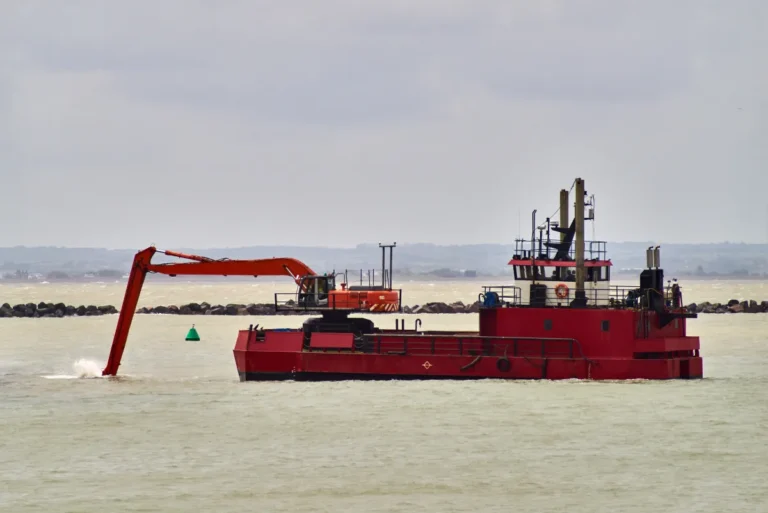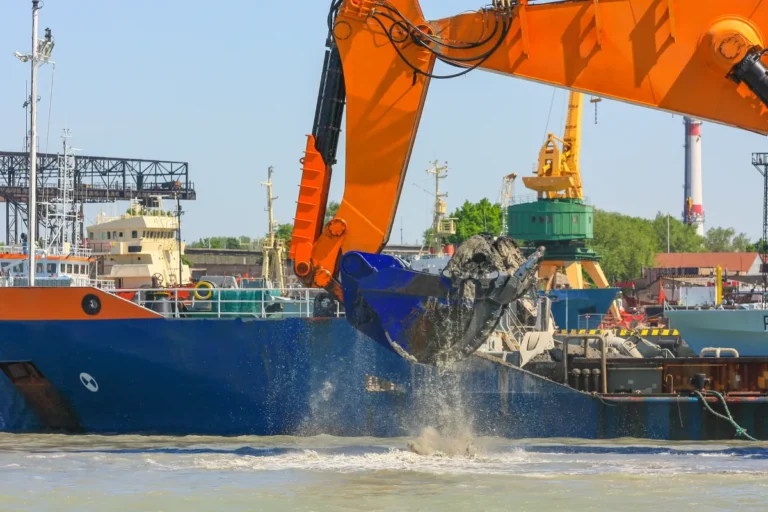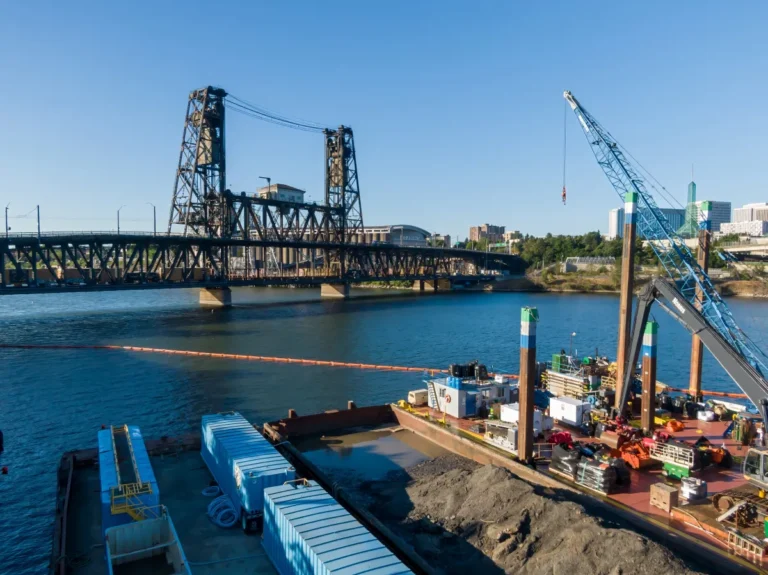Maintenance dredging is a critical process that keeps ports, harbors, and navigation channels operating safely and efficiently. Over time, natural sedimentation from rivers, tides, and storms reduces water depth, disrupts vessel movement, and increases the risk of grounding. By routinely removing this sediment, maintenance dredging ensures safe maritime access, supports harbor dredging activities, and even enables beneficial projects like beach reclamation. As global trade expands and coastal infrastructure grows more vulnerable to erosion and climate-related impacts, the importance of planned, sustainable dredging practices continues to rise. Understanding how the process works—from assessment and planning to execution and environmental compliance—is essential for port authorities, marine contractors, and coastal planners alike.
What is Maintenance Dredging and Why is it Necessary
Maintenance dredging is the routine process of removing accumulated silt, sand, and debris from existing ports, waterways, and harbor channels to keep them at their required depth. It differs from capital dredging, which involves creating new channels or deepening areas for the first time. Over time, natural sedimentation from rivers, tides, storms, and coastal currents causes waterways to become shallower, reducing vessel draft and increasing the risk of grounding.
When this buildup restricts navigation, delays ship movement, or affects port operations after heavy rainfall or storm events, maintenance dredging becomes essential. It restores safe depth, maintains harbor efficiency, and ensures compliance with maritime safety standards. As sedimentation is a continuous process, proactive planning, surveys, and timely dredging help avoid costly port disruptions and set the stage for efficient dredging operations.
Planning and Pre-Dredging Assessment
Effective maintenance dredging begins with thorough planning and site assessment to ensure operations are safe, efficient, and compliant. The process typically starts with hydrographic surveys using technologies like multibeam sonar, RTK-GPS, or LiDAR to map existing depths and identify areas where sediment has built up. These surveys help determine dredging volumes, channel alignment, and critical shallow zones that may disrupt harbor dredging or vessel navigation.
Sediment sampling is the next vital step. Here, core samples are taken to analyze grain size, density, contamination, and suitability for reuse in applications like beach reclamation or land restoration. If sediment contains pollutants, additional permits and controlled disposal methods may be required.
Environmental clearances are essential before any dredging begins. Port authorities, coastal regulators, and environmental agencies typically require an Environmental Impact Assessment (EIA) to evaluate potential impacts on water quality, marine habitats, and nearby communities. Planning must also consider weather conditions, tidal cycles, shipping schedules, and sensitive marine activities such as breeding or migration seasons.
Scheduling is strategic—maintenance dredging is often planned during low-traffic periods to minimize disruption to port operations. Defining clear objectives, timelines, and disposal or reuse methods for dredged material allows for cost-efficient and environmentally responsible execution.
With planning complete, the next step is selecting the right dredging equipment and technology to match sediment type, site depth, and project constraints.
Selecting the Right Dredging Equipment
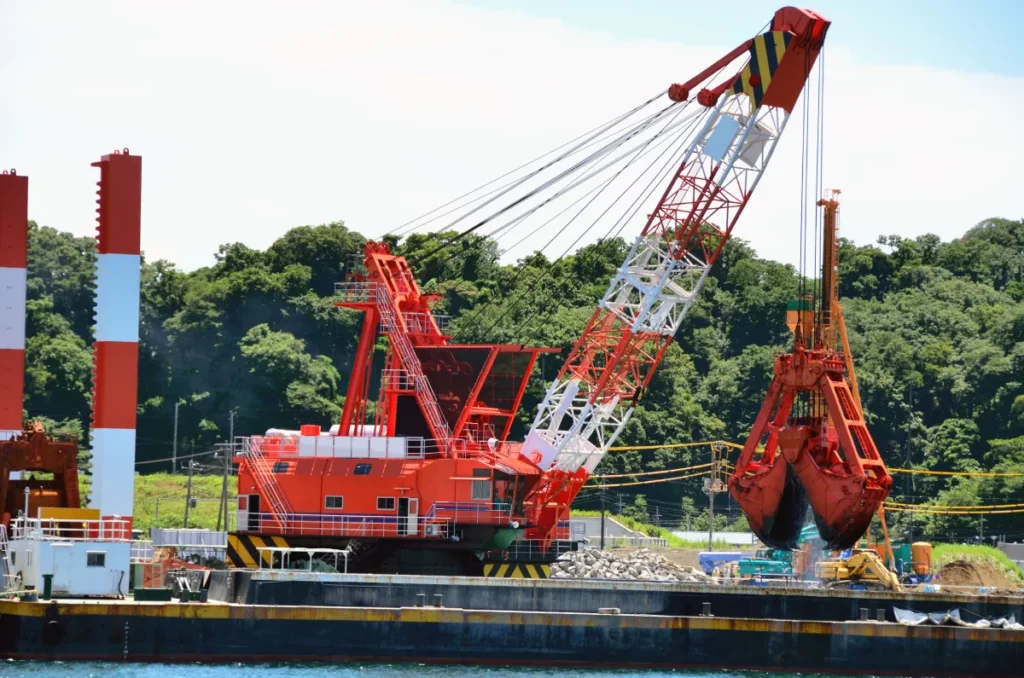
Choosing the right equipment is one of the most critical decisions in maintenance dredging, as it directly affects efficiency, cost, and environmental impact. The type of dredger used depends on factors like water depth, sediment characteristics, site accessibility, and whether the material will be transported, disposed of, or reused for beach reclamation.
For large-scale maintenance and harbor dredging, Trailing Suction Hopper Dredgers (TSHDs) are commonly used. These self-propelled vessels suck up loose sediment while moving along the channel and store it in onboard hoppers, making them ideal for ports with high traffic and deeper waters. For compacted soils, clay, or harder materials, Cutter Suction Dredgers (CSDs) are preferred. They use a rotating cutter head to loosen material before suction, allowing precise removal in shallow areas and riverbeds.
In confined spaces such as small harbors, docks, or marinas where maneuverability is limited, Backhoe or Grab Dredgers mounted on barges are more suitable. These mechanical systems are slower but extremely accurate and effective in urban waterfronts and near quay walls.
Supporting equipment such as booster pumps, floating pipelines, survey vessels, and positioning systems (like RTK GPS) enhances productivity and accuracy. Selecting energy-efficient, low-emission machinery also contributes to environmentally responsible maintenance dredging.
Once the right equipment is chosen, the focus shifts to the actual execution of dredging operations, where precision, safety, and continuous monitoring play a crucial role.
Step-by-Step Maintenance Dredging Process
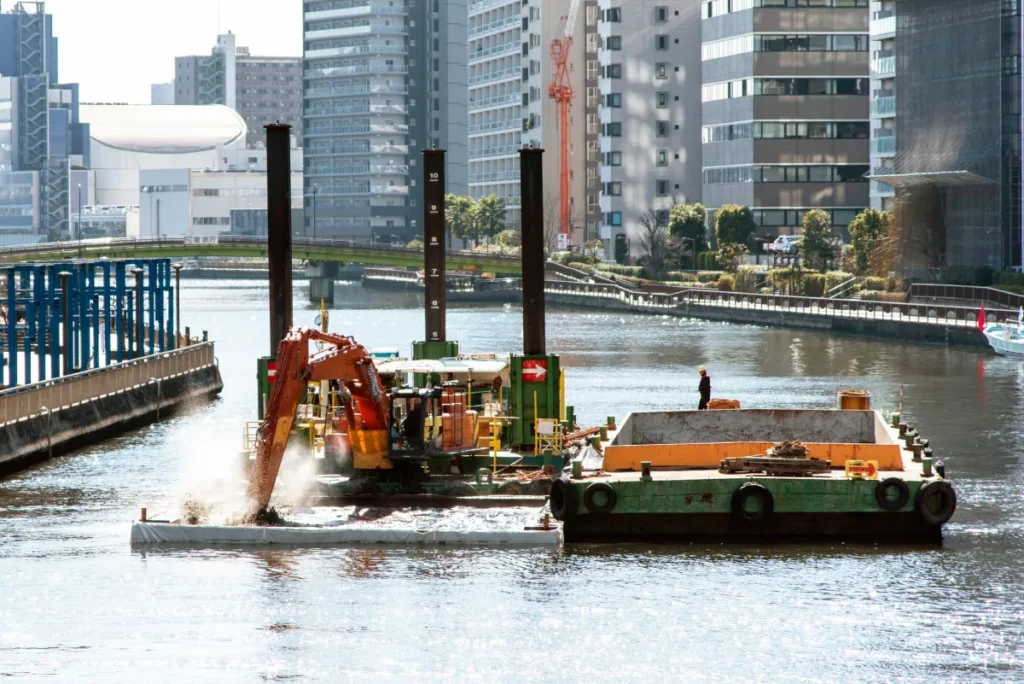
The maintenance dredging process follows a structured sequence to ensure safe, efficient, and uninterrupted port or harbor operations. It begins with mobilization, where dredging vessels, support equipment, pipelines, fuel barges, and crew are transported to the site. Safety protocols, communication systems, and navigation controls are tested before operations begin.
Once mobilized, dredgers are precisely positioned using RTK GPS, sonar systems, or automated dredging software to ensure accuracy. Dredging then starts through either hydraulic suction, cutter head excavation, or mechanical digging, depending on the chosen equipment. During operations, depth levels are continuously monitored to avoid over-dredging or disturbing sensitive marine zones. This stage is crucial for keeping channels open and maintaining drafts needed for harbor dredging and vessel navigation.
The removed material is either stored in hopper tanks, pumped through floating pipelines, or loaded onto barges for transport. Depending on its quality, sediment is sent to offshore disposal zones, confined containment areas, or beneficial reuse sites such as beach reclamation projects.
After target depths are restored, equipment is cleaned and demobilized. A post-dredging hydrographic survey is conducted to verify dredged depth, volume accuracy, and compliance with maritime regulations. Documentation, including dredge logs, environmental reports, and disposal records, is submitted to relevant authorities.
This structured approach ensures maintenance dredging is safe, cost-efficient, and environmentally responsible, while setting the stage for ongoing sediment management and long-term port sustainability.
Sediment Disposal and Use in Beach Reclamation

Once sediment is removed during maintenance dredging, the next critical step is deciding how to handle, transport, and reuse or dispose of it. The chosen method depends on the sediment’s composition, contamination level, and proximity to disposal or reclamation sites.
Offshore disposal is used when the material is clean and environmentally safe. Dredged sediment is transported to designated open-water dump sites approved by coastal or maritime authorities. For material that contains pollutants or heavy metals, it must be placed in confined disposal facilities (CDFs) or geotextile tubes, where it can be contained, dewatered, and monitored without harming the environment.
Where sediment is clean and sandy, it presents a valuable opportunity for beach reclamation and shoreline reinforcement. In coastal regions facing erosion, this dredged material is used to rebuild beaches, protect coastal infrastructure, and replenish tourist shorelines. Ports and municipalities often prefer this option as it reduces disposal costs while supporting environmental sustainability.
In some cases, dredged material is reused in land reclamation projects, construction fill, landscaping, or wetland restoration. However, this requires sediment testing to ensure it meets engineering and environmental standards.
Disposal planning is typically integrated into the maintenance dredging strategy before work begins, helping reduce operational delays and costs. Following disposal or reuse, authorities may require post-placement surveys and environmental monitoring to ensure long-term stability.
With disposal and reuse addressed, the next focus shifts to minimizing environmental impacts during dredging operations.
Environmental Controls During Harbor Dredging
Maintenance dredging plays a critical role in keeping ports operational, but if not managed properly, it can impact marine ecosystems. To ensure environmentally responsible operations, dredging activities are planned and executed with strict control measures.
One of the primary environmental concerns is turbidity, where suspended sediments reduce water clarity and affect aquatic life. To control this, contractors use silt curtains, floating barriers, and controlled suction speeds to minimize sediment plumes. Real-time turbidity monitoring ensures that limits set by environmental authorities are not exceeded.
Sensitive habitats such as coral reefs, seagrass beds, mangrove zones, and fish spawning areas are carefully mapped during pre-dredging surveys. In these areas, dredging is avoided or restricted to specific seasons to protect breeding and migration cycles. In harbor dredging zones, working during low biological activity periods can significantly reduce ecological disturbance.
Noise and underwater vibration from dredging equipment can affect marine species. To mitigate this, operators use low-noise engines, bubble curtains, and equipment fitted with emission control systems to comply with air and water quality standards. Eco-friendly fuels and energy-efficient equipment are increasingly adopted to reduce the overall carbon footprint.
Environmental Impact Assessments (EIA) and continuous monitoring are often mandatory throughout the dredging timeline. Data on water quality, sediment dispersion, and marine life are regularly recorded to ensure compliance and adjust operations if needed.
With environmental safeguards in place, the next step is managing dredging costs and ensuring long-term operational efficiency.
Cost Management and Long-Term Efficiency
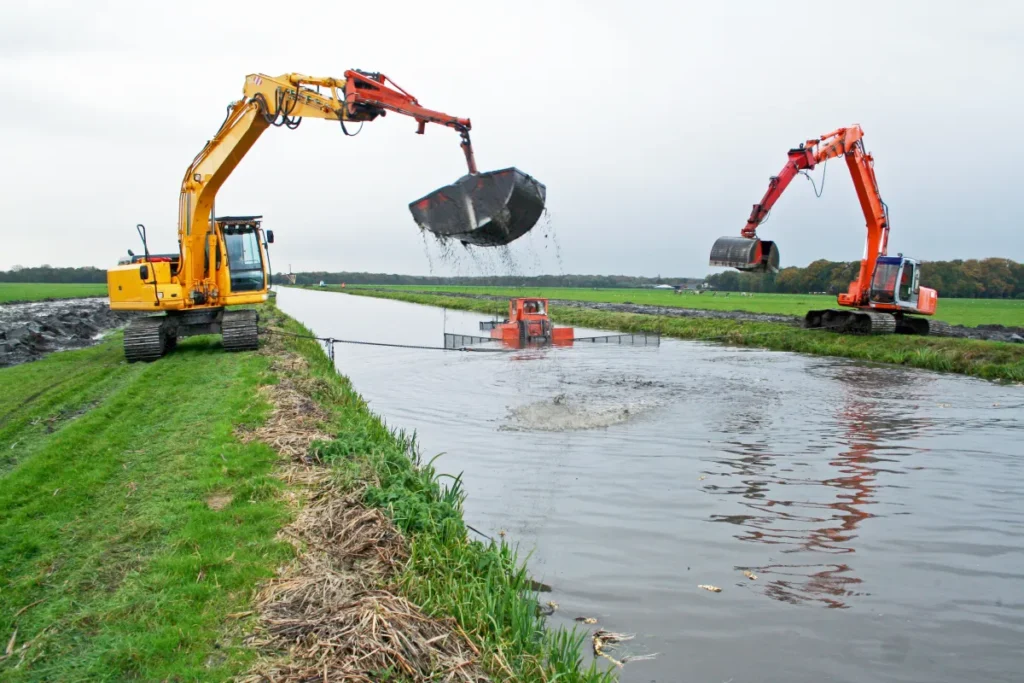
Cost efficiency is a major consideration in maintenance dredging, especially for busy ports and harbors where dredging is a recurring operational requirement. The primary cost components include fuel consumption, equipment rental or ownership, labor, survey costs, transport of sediment, and disposal or reclamation site fees. Poor planning or emergency dredging often leads to inflated budgets, operational delays, and disruptions in port logistics.
A proactive approach—known as scheduled maintenance dredging—is significantly more cost-effective than reactive dredging after heavy siltation or navigation shutdowns. By conducting regular hydrographic surveys and monitoring sedimentation rates, ports can plan dredging intervals strategically, reducing the need for high-intensity operations. This approach also extends equipment lifespan and lowers fuel and workforce costs.
Using appropriate dredging equipment plays a major role in optimizing costs. For example, using a trailing suction hopper dredger in deep, open waters is more economical, while small backhoe dredgers are cost-efficient for confined harbor dredging. Fuel-efficient engines, automation, and real-time monitoring systems further minimize operational wastage.
Another cost-saving strategy is the beneficial reuse of dredged material for beach reclamation or land development rather than offshore disposal, which reduces transportation expenses and supports environmental goals.
Long-term efficiency comes from combining sediment management plans, predictive maintenance, and multi-year dredging contracts. These strategies allow ports to maintain navigational depth consistently while avoiding unexpected capital expenses.
With financial planning in place, the final step is ensuring long-term sustainability and operational reliability through modern, smart dredging practices.
Conclusion: Smart Dredging for Sustainable Waterways
Effective maintenance dredging is not just about removing sediment—it’s about protecting maritime trade, preventing costly port downtime, and preserving coastal environments. When planned strategically, it reduces long-term expenses, supports safer navigation, and allows dredged material to be responsibly reused for shoreline or beach reclamation. At CA Dredge Pros, we help ports and marine operators achieve this balance with efficient, environmentally responsible dredging solutions tailored to local conditions. Whether you need routine maintenance dredging, harbor depth restoration, or coastal protection support, we’re here to make your waterways safer, deeper, and built for long-term performance.


